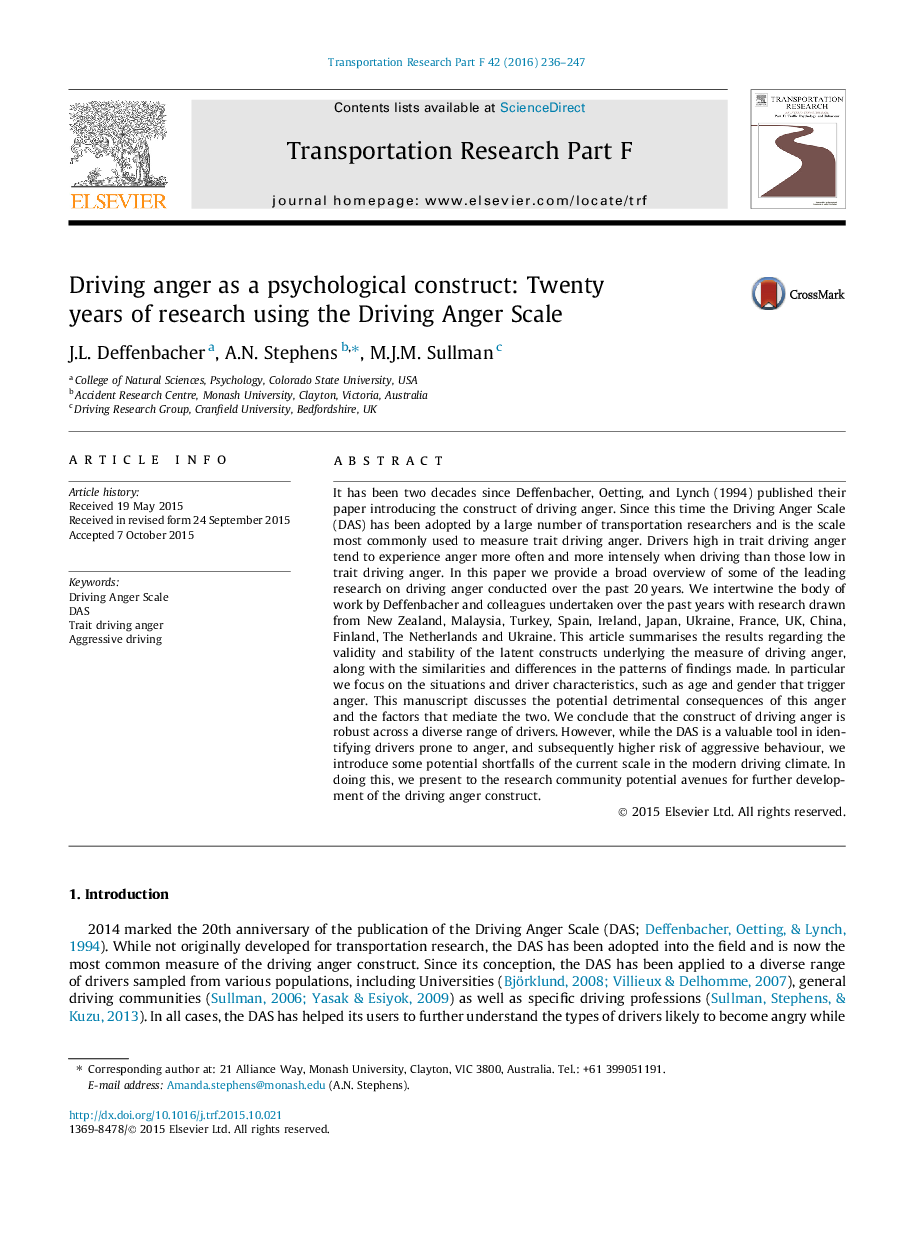| کد مقاله | کد نشریه | سال انتشار | مقاله انگلیسی | نسخه تمام متن |
|---|---|---|---|---|
| 5037503 | 1370225 | 2016 | 12 صفحه PDF | دانلود رایگان |
- It has been 20Â years since the Driving Anger Scale was first published.
- We provide a broad review of the development of the scale.
- We provide a review of the research using the scale over the past two decades.
- We discuss similarities and differences in findings.
- We conclude by suggesting avenues for further research.
It has been two decades since Deffenbacher, Oetting, and Lynch (1994) published their paper introducing the construct of driving anger. Since this time the Driving Anger Scale (DAS) has been adopted by a large number of transportation researchers and is the scale most commonly used to measure trait driving anger. Drivers high in trait driving anger tend to experience anger more often and more intensely when driving than those low in trait driving anger. In this paper we provide a broad overview of some of the leading research on driving anger conducted over the past 20Â years. We intertwine the body of work by Deffenbacher and colleagues undertaken over the past years with research drawn from New Zealand, Malaysia, Turkey, Spain, Ireland, Japan, Ukraine, France, UK, China, Finland, The Netherlands and Ukraine. This article summarises the results regarding the validity and stability of the latent constructs underlying the measure of driving anger, along with the similarities and differences in the patterns of findings made. In particular we focus on the situations and driver characteristics, such as age and gender that trigger anger. This manuscript discusses the potential detrimental consequences of this anger and the factors that mediate the two. We conclude that the construct of driving anger is robust across a diverse range of drivers. However, while the DAS is a valuable tool in identifying drivers prone to anger, and subsequently higher risk of aggressive behaviour, we introduce some potential shortfalls of the current scale in the modern driving climate. In doing this, we present to the research community potential avenues for further development of the driving anger construct.
Journal: Transportation Research Part F: Traffic Psychology and Behaviour - Volume 42, Part 2, October 2016, Pages 236-247
